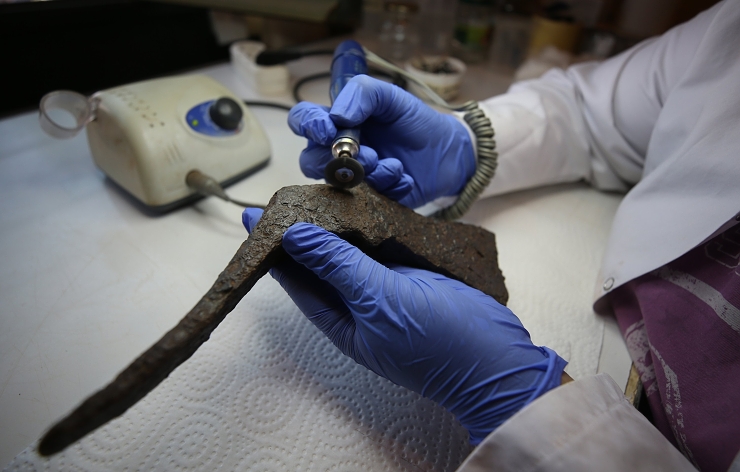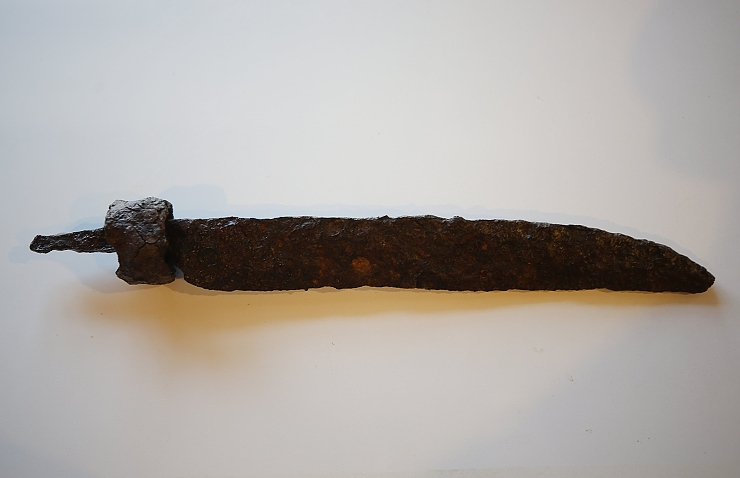Myslim, že ta keramika je starší než byzantská.
Archaeologists find 1,300-year-old iron axe and machete in perfect condition
Categories: Nálezy nejenom s detektorem na blízkém východě
An iron axe and machete from the Byzantine era has been discovered by archaeologists in the ancient city of Assos in northwestern Turkey. They were found while exploring the remains of a dwelling along with other everyday objects. Also of interest is a small terracotta grill. The finds provide an important insight into the daily life of the people of the time.
"One of the metal objects we have found this year is a large iron knife, probably a machete," announced the head of the excavation, Professor Nurettin Arslan. He continued, "It was found in a Byzantine building that we call a gymnasium (training ground). Another find is a type of axe that was probably used specifically for shaping and splitting wood. Both tools are very important in terms of their preservation and form despite the long years they have spent in the ground. They represent an important example of the materials used in Assos."
The axe and machete are almost intact, missing only the organic parts - the handles. They represent a unique and important find from the Byzantine archaeological strata. The other objects in this layer are mostly fragments of pottery, which archaeologists are piecing together piece by piece. In these structures we have discovered pots and pans that belong to everyday life and convey details about the lifestyle of the time. For us, the data they provide is very important. However, it is very difficult to find intact pottery in these structures. We collect sherds from different areas and try to put them together like a puzzle," explained Professor Arslan.
One of the interesting finds is a terracotta grill: "Barbecuing is one of the simplest methods of preparing meat - we also barbecue today, it was certainly popular then," Nurettin Arslan described the find. He added that other kitchen items included pots used to stir food and make porridge from crops such as chickpeas and lentils. In addition, plates and containers for storing food or drinks were discovered: "We have a large collection of pottery from the Byzantine period, which helps us to time the other pottery we have found in the city."
The ancient city of Assos was founded on a hill overlooking the Aegean Sea. The area was colonised by people from the island of Lesbos 3,000 years ago. There was the only suitable natural harbour within an 80 km radius, so the site on the Biga peninsula was crucial for trade for thousands of years. That is why the village has been continuously inhabited since its foundation. The modern name is Behramkale, but the original name of Assos is still used in the local vernacular today. It is an important tourist resort, attracting ancient monuments such as the Temple of Athena from the Hellenistic era (6th-4th century BC).
The most famous local resident was Aristotle, who founded his first philosophical school here in 348 BC. Aristotle founded the first Aristotelian school in 348 AD after he left Athens and the Academy after Plato's death. He lived here for three years before being summoned by the Macedonian King Philip II to tutor the then young future Alexander the Great...
Roman Nemec



Sources: thehistoryblog.com, dailysabah.com
The article is included in categories:



